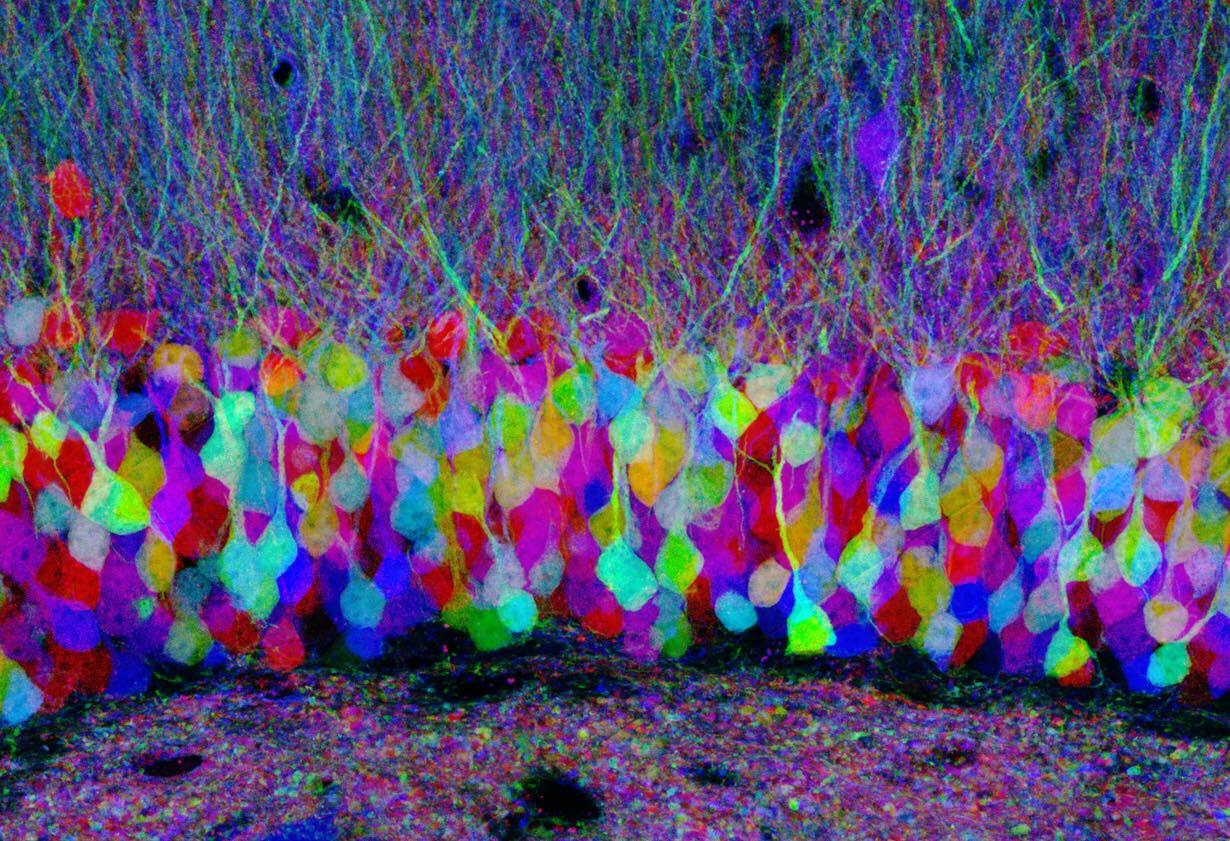Shown: The image of the brain of a “brainbow mouse”. What is a ‘brainbow’? The ‘brainbow’ method of looking at the brain uses a combination of genetic technologies and cell staining techniques. Staining neurons with three or more fluorescent proteins can generate up to 90 different colours, resulting in a ‘brainbow’. Brainbows are helping scientists get better at mapping the brain and nervous system’s complex tangle of neurons. They could also help track the development of the nervous system in the embryo, and give new insight into the origins of brain disorders.
Several of my recent posts on social media regarding the book, Reductionism in Art and Brain Science: Bridging the Two Cultures by Eric R. Kandel have prompted a number of people to submit very thoughtful/insightful comments and emails regarding the perceived problems inherent to a reductionist approach to understanding something as complex as the art experience (or even pictorial composition.) And truthfully, these comments/emails did offer some excellent points.
I do think though that many tend to misrepresent a reductionist approach to a complex system as being completely free of any “holistic”, contextual considerations.
For example, consider that the human brain contains roughly 100 billion neurons with about 100 trillion connections (give or take a few.) So would a reductionist approach to understanding how the brain facilitates human behavior be confined to the morphology of a single neuron?
Hardly. I would expect this as much as I would expect to fully comprehend pictorial composition from an investigation of how we see the color blue. Human behavior emerges from a robust symphony of brain states that can seem to require a consideration of factors that number almost beyond comprehension. (Well, no one said allowing an organ to investigate itself would be easy). However, from the investigations of that individual neuron we can begin to understand a surrounding biological context. And, in turn, as we develop an understanding of such a context, we can refine our understanding of the target neuron. This conceptual game of “pong” between parent contexts and daughter components can continue as we pull back to consider the system at greater levels of resolution (often returning to lower-level components for model refinement.)
This concept can be easily compared to the manner in which early stages of a painting or drawing unfold. The “blocking in” of a drawing, or “laying-in” of a painting, commonly involves the application of individual marks based on a set of contextual considerations, only to have a new context arise from the aggregate of marks that prompts refinement or augmentation of the marks that form the new context (think about that five times fast…)
While I indeed do find reductionist approaches to many aspects of the art experience very successful, the strategy is not necessarily a component of a zero-sum game with other methodologies. Granted, independent of contextual considerations, a reductionist approach can seem EXTREMELY limited and is often suspected of missing some greater “Gestalt” factor—but fortunately, many of us do not investigate complex issues in the same way—and in that diversity lies great advantage for us all.
